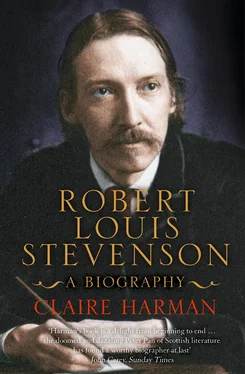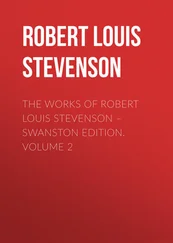Rennie, understandably, was piqued by Stevenson’s machinations and considered him dishonest, or at best self-deluding. His assistant engineer had a history of stealing credit, Rennie complained to a friend, and ‘has assumed the merit of applying coloured glass to lighthouses, of which Huddart was the actual inventor, and I have no doubt that he will assume the whole merit of planning and erecting the Bell Rock Lighthouse, if he has not already done so’. 7 That was exactly what Stevenson did, and to this day he is credited with the design, which was nothing to do with him. No shadow of guilt or self-doubt troubled the assistant engineer; the carrying-through of a plan was, to him, far more difficult and important than merely generating it. It was an attitude inherited by his son Thomas, who displayed similar confidence in his own viewpoint and who was also accused of professional plagiarism when he ‘stepped in and brought to [ … ] perfection’ (his son’s generous phrase) 8 a revolving light designed by the French inventor Leonor Fresnel. This makes it look as if the family ethos was one of raw self-interest, but the case was rather subtler than that. The Stevensons were old-fashioned, and refused to register for patent any of their lighthouse inventions, on the grounds that as government appointees ‘they regarded their original work as something due already to the nation’. 9 They made a distinction between what was owed to the Northern Lighthouse Board (service) and what was right for the family business (maximum profit), and willingly gave up exclusive rights in their own inventions in order to be able to cash in on other people’s unexploited ideas. This family trait would work out interestingly in Robert Louis Stevenson, whose flexible attitude to matters of intellectual property led to the most traumatic quarrel of his life, and who remained high-minded about copyright right up to the moment when he wrote a bestseller.
Of all the engineering works that the Stevenson family were involved in, the Bell Rock lighthouse was the most impressive, firing the public imagination with its combination of romantic endeavour and futuristic technology. It already had a celebrator in the Poet Laureate Robert Southey, whose ballad ‘The Inchcape Rock’, published in 1803, commemorated the story of the Abbot and the bell in thrumming lines:
When the rock was hid by the surge’s swell,
The mariners heard the warning bell;
And then they knew the perilous rock,
And blessed the Abbot of Aberbrothok.
Walter Scott also took a keen interest in the Bell Rock, which he visited in 1814. The NLB Commissioners had invited him on a tour of the lighthouses conducted by ‘the celebrated engineer’ (Scott’s phrase) Robert Stevenson. The party went all round the coast, from the Isle of May in the Firth to the Inner Hebrides, calling in at Bell Rock (where Scott wrote some verses in the visitors’ book) and getting out, with difficulty, to survey a jagged reef off Tiree called Skerry Vohr which Stevenson was trying to persuade the Commissioners to build a light on. The novelist was gathering material for his next book, The Pirate , and worked on his notes with an application which impressed Robert Stevenson, who had not at this date read any of Scott’s works. ‘[Scott] was the most industrious occupier of time,’ Stevenson recorded in his journal,
he wrote much upon deck – often when his seat on the camp stool was by no means steady. He sometimes introduced Rob Roy’s exploits in conversation so fully that when I read the Book many parts of it were like a second reading to me. 10
The description is oddly prophetic of another industrious writer who composed much upon deck and was able to talk of his fictional creations as if they were real, Robert Stevenson’s grandson. But it was Scott’s work ethic, not his genius, that won Robert Stevenson’s approval; he clearly thought artists in general to be rather a waste of space. Two generations later, Robert Louis Stevenson judged himself by the same rigid family standards, which venerated professionalism, inventiveness, hard work and money-making and thought little of self-expression and art. He came to feel that he was a very inadequate heir to these active men, a mere ‘slinger of ink’, sunk in comparative idleness. When he was writing his Records of a Family of Engineers in the last year of his life, Stevenson burst out in a letter to his friend Will Low, ‘I ought to have been able to build lighthouses and write David Balfours too.’ 11 A poem Stevenson wrote in the 1880s (when, incidentally, he was living in a house named after his uncle’s most famous lighthouse and surrounded by lighthouse memorabilia) expresses the same feeling of having failed his inheritance:
Say not of me that weakly I declined
The labours of my sires, and fled the sea,
The towers we founded and the lamps we lit,
To play at home with paper like a child.
But rather say: In the afternoon of time
A strenuous family dusted from its hands
The sand of granite, and beholding far
Along the sounding coast its pyramids
And tall memorials catch the dying sun,
Smiled well content, and to this childish task
“Around the fire addressed its evening hours, 12
How neatly the change in typeface separates what the poet would like to have said about himself from what he thinks will be said. And how much more striking than his engrossed images of the strenuous family and their colossal achievements is his bitter description of himself left ‘playing at home with paper like a child’.
The paternal line dominates Robert Louis Stevenson’s family history, for ‘the celebrated engineer’ made it one of the most respectable names in Edinburgh at the beginning of the nineteenth century. Robert and his sister-wife Jean had thirteen children, only five of whom survived infancy: one girl (Jane) and four sons, three of whom followed their father into the family business, with greater or lesser enthusiasm, and the youngest of whom, Thomas, became the father of our subject. * They lived in the large house that Thomas Smith had built in 1803 in Baxter Place, fronting onto busy Leith Street, with a long garden at the back running to the bottom of the Calton Hill. The Stevenson children played in the cellars or the orchard, and hung around their father’s office or the specially-built workshops, where there was always ‘a coming and going of odd, out-of-the-way characters, skippers, lightkeepers, masons, and foremen of all sorts’. 13 Though the Stevensons were not known for keeping a lavish table (Jean Stevenson, a strict Calvinist, made a habit of choosing both her butcher and her cook on religious grounds), the house was always open to employees of the Northern Lighthouse Board. Robert Stevenson was a paternalistic boss, minutely concerned with all aspects of the men’s lives: their wives’ confinements, their children’s schooling, the welfare of the sick and the conduct of prayers. ‘My grandfather was much of a martinet,’ Stevenson reported,
with his powerful voice, sanguine countenance, and eccentric and original locutions, he was well qualified to inspire a salutory terror in the service [ … ] In that service he was king to his finger-tips. All should go his way, from the principal lightkeeper’s coat to the assistant’s fender, from the gravel in the garden walks to the bad smell in the kitchen, or the oil-spots on the storeroom floor. 14
Oddly enough, with this Jove for a father, young Thomas Stevenson managed for years to evade discovery that he was doing very little schoolwork. Being the youngest of many children, seventeen years his sister Jane’s junior, perhaps he just adopted the tactic of keeping his head down at home. He wasn’t a stupid boy (although he never mastered mathematics, which was a considerable handicap in his professional life), but early on developed a strong aversion to book-learning. This amounted to an obsession in later life, when he would stop schoolboys on the street and advise them to learn only what seemed to them good. ‘There seems to have been nothing more rooted in him than his contempt for all the ends, processes, and ministers of education,’ his son was to claim; ‘he bravely encouraged me to neglect my lessons, and never so much as asked me my place in school. What a boy should learn in school he used to say is “to sit on his bum”. It could scarcely be better put.’ 15
Читать дальше












